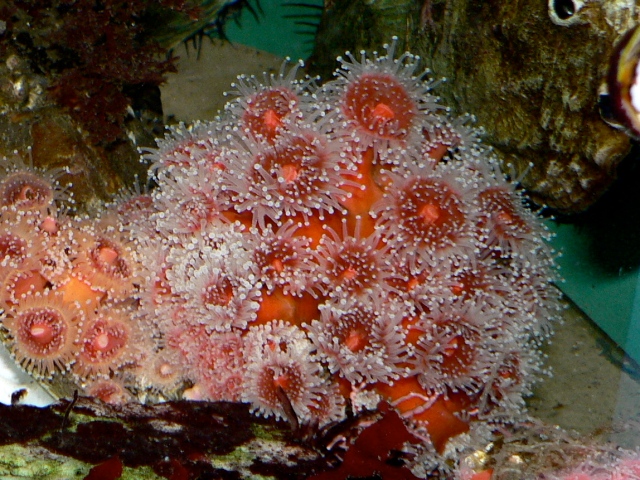TAXONOMY
Kingdom:Animalia
Phylum: Cnidaria
Class: Anthozoa
Order: Corallimorpharia
Family: Discosomatidae (Corallimorphian)
Genus/species: Discosoma spp.
GENERAL CHARACTERISTICS: Generally they are disc shaped with a conical mouth, and the oral disc may be smooth, ribbed, with small or large pseudo tentacles or none at all. Unlike Rhodactus spp., most Discosoma spp. have smooth disc surfaces that lack obvious tentacles, though some may have small or rudimentary tentacles that are visible as rows of knobs. Discosoma spp. have many different colors such as blue, red, green and purple and some comes in stripes and spotted pattern,
The consistency of the tissues is thick and, due to copious mucus production, they are slippery to the touch.
Diameter up to 8–15 cm (3-6 in)
DISTRIBUTION/HABITAT: Widespread in Indo-Pacific; also common in the Caribbean. Found in tropical coral reefs, typically in dense aggregations.
DIET IN THE WILD: Discosoma spp. is a microcarnivore of plankton; may also possess zooxanthellae.
REPRODUCTION: Sexual and asexual, mostly through budding and pedal laceration. Formation of colonies of clones is common for most species.
REMARKS:
Corallimorphs are, as their name implies, very coral-like, but they do not secrete a skeleton.
Aquarists commonly use the generic term Actinodiscus.
REFERENCES
California Academy of Sciences Steinhart Aquarium Color on the Reef 2018
Aquarium Corals E H Borneman TFH Publications 2001 page 201-3
Ron’s flickr https://www.flickr.com/photos/cas_docents/26535600445/in/album-72157659465376212/
Ron’s WordPress shortlink wp.me/p1DZ4b-1Kn
Advanced Aquarist www.advancedaquarist.com/2002/10/inverts#section-0












